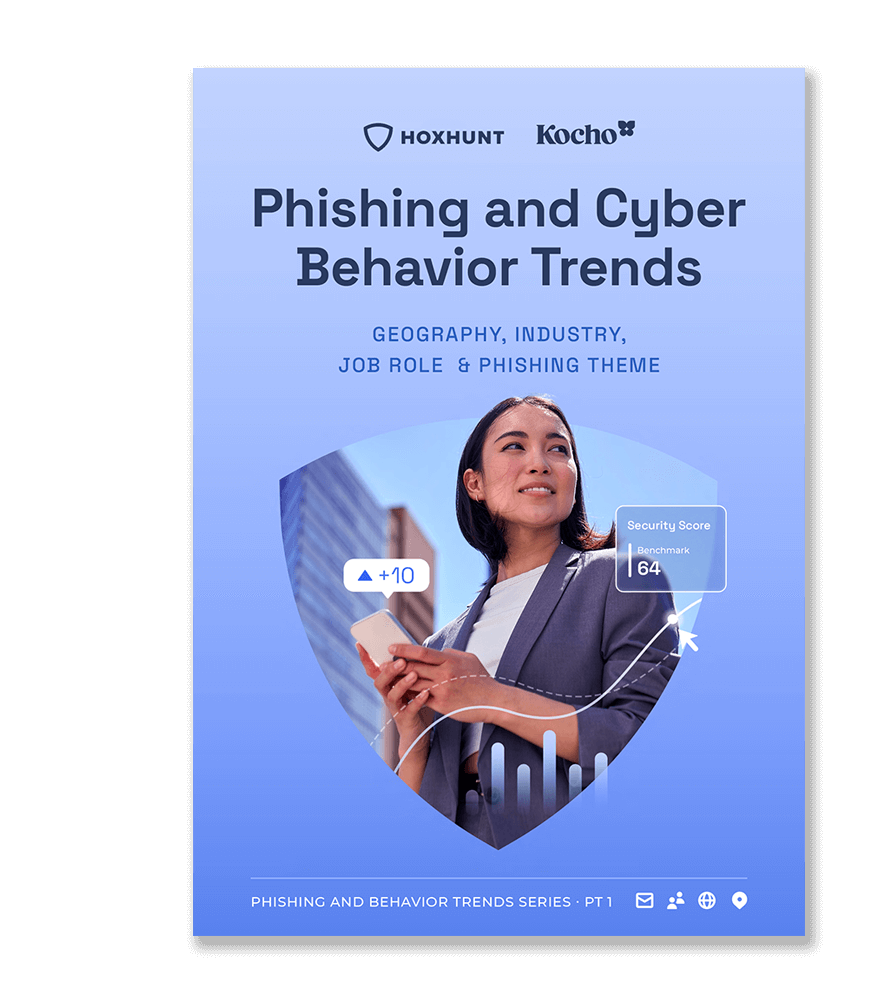How would your organisation cope in the face of a highly targeted and sophisticated social engineering phishing attack?
In this blog we dissect a fictional phishing incident. Exploring the ease with which organisations can become victims and the consequences of letting a breach take hold.
Plus, the steps you can take to prevent phishing phiasco.
Social engineering, identity targeting, and sophisticated intrusion tactics make phishing attacks a continued reason to keep IT leaders awake at night. And why robust and unified cyber security operations should be a top priority for any organisation of any size.
The following scenario is fictional. But for organisations who don’t take the right steps, it all too quickly becomes a reality they don’t want, and certainly can’t afford.
The target
Bannister, Collins & Barnes (BCB Law) started life in a small office in London in 1983. From humble beginnings they’ve steadily grown. Moving to a larger office in a prestigious building just off the Strand in 2001, the firm now boasts regional offices in Cardiff, Glasgow, Leeds, and Dublin.
Today they’re one of the most trusted names in the world of litigation, commercial conveyancing, and corporate law. A proud reputation fostered over forty years.
Like many businesses, BCB Law adapted to remote working during the COVID-19 pandemic. It was a cultural shift from which there was no going back. Today, the 250 strong staff divide their time between office and remote locations.
On a sunny Monday in 2024, everything seemed normal as the partners gathered in their London boardroom. But behind the scenes, a catastrophic phishing attack was about to unfold.
An attack that was both devastating and entirely preventable.
It started with reconnaissance and social engineering
The mastermind behind the attack wasn’t a lone wolf in a dark basement. It was a well-oiled operation, meticulously planned for weeks.
Using digital reconnaissance, the attackers scoped out their prey through social media, internet searches, and phone calls. A methodical campaign which included:
- Searching LinkedIn profiles of influential employees, cross-referencing with other social platforms to gather personal details.
- Conducting online searches for company structure, finances, and key personnel, noting email formats and public details.
- Making pretext calls to the firm’s reception desk, posing as potential clients or partners to confirm email addresses and availability of key personnel.
Armed with this intelligence, the attackers crafted a convincing phishing email. Using generative AI tools, they mimicked the style and branding of BCB Law’s internal communications.
A trojan horse, designed to exploit trust and human error.


Free Report
Phishing and Cyber Behaviour Trends
Who’s clicking on what? Why? And are your employees reporting threats?
Download Hoxhunt’s Phishing report and find out:
- Phishing threats that pose the highest risk
- Average time to identify and contain a breach
- Highly targeted and highly susceptible industries
One wrong click is all it took
Rachel Green, a corporate lawyer at BCB Law’s Leeds office, opened the email as soon as it popped up.
After all, it seemed to be from Emma Rushmore, the firm’s Senior Partner. And the subject line indicated high importance.
“URGENT: Immediate Action Required – Security Update.”
She read on.
“Suspicious activities detected within our network” the email said, urging her to “verify your account immediately to enhance our security measures.”
Below, a bold blue button:
“Secure Verification Portal.”
Rachel clicked the button.
It looked legitimate: the BCB Law logo, the familiar colour scheme.
And it came from the boss.
She verified her credentials as asked and went on with her day.
Across the country, a similar scene played out. Amir Zaki, an administrative assistant in Cardiff, clicked. Sophia Wilson, a paralegal in Glasgow, clicked. David Kelly, a financial analyst in Dublin, clicked.
These names were not picked at random. Each had access privileges that could be exploited. And they had all just volunteered their usernames and passwords to the attackers.
Breaches of network and trust
With stolen credentials, the attackers infiltrated the network, exploiting vulnerabilities and seeking out the stores of sensitive data.
Malware was installed, granting persistent access and cloaking their movements.
They moved laterally, pilfering client data, case files, financial records – the lifeblood of the firm.
Data exfiltration was slow. A clandestine, steady trickle of sensitive information disappearing into the digital abyss.
Thanks to the stealth and subtlety of their actions, and by using stolen credentials instead of forced entry, the attackers were able to remain undetected for thirty days.
The cyber breach is detected…eventually
It began with a blip on the radar. Samir Sharma, IT Manager, in London’s Head Office noticed unusual network traffic and access patterns.
The firm’s security systems flagged multiple anomalies:
- Unusual login locations: Logins from locations not typical for the users.
- Multiple failed login attempts: Higher than usual failed login attempts from compromised accounts.
- Abnormal access patterns: Access to resources or systems that users did not typically interact with.
- Unusual times of access: Logins occurring late at night or early morning, outside normal working hours.
- Large data transfers: Significant volumes of data accessed or transferred by users who typically did not perform such actions.
- Lateral movement: User accounts accessing multiple systems or network segments in a short period.
- Privilege escalation attempts: Attempts to gain higher privileges or access rights.
- Anomalous device usage: Access from unrecognised or new devices.
A team was assembled, a frantic investigation launched.
But it took another ten days to trace the breach back to the compromised accounts. Each click offering a digital fingerprint leading them back to the source.
The phishing attack’s devastating timeline
Day 1:
The phishing emails land in employee inboxes. Unaware of the sophisticated social engineering tactics employed, several employees click the malicious link, compromising their credentials. The attackers gain a foothold in the network.
Days 2-30:
The attackers move laterally, exploiting vulnerabilities and escalating privileges. Malware is installed to maintain access and mask their activity. Sensitive data is slowly exfiltrated.
Day 40:
An anomaly in network traffic patterns triggers an investigation by the IT team. The compromised accounts and lateral movement within the network are identified.
Days 41-50:
The full scope of the breach is understood. Remediation efforts begin, including isolating infected systems, resetting passwords, and implementing additional security measures. Communication with clients about the breach commences.
Weeks/Months Following:
Regulatory investigations, legal battles, and data recovery efforts continue. The financial and reputational damage becomes evident.
The high cost of a slow response
This timeline underscores the critical importance of rapid detection and response. A 40-day window allowed the attackers to wreak havoc, stealing sensitive data and causing significant financial and reputational damage to BCB Law.
BCB Law were known for their trustworthiness, stability, and financial strength. One attack, meticulously planned and aimed at human vulnerability, threatened to ruin that in little more than a month.
A cautionary tale
With just a few rogue clicks, BCB Law was nearly brought to its knees. A sophisticated phishing campaign, exploiting human trust, exposed the vulnerability of a system lacking robust cyber security measures.
Yes, this is a fictional narrative. But the anatomy of the attack, the timeline, and the consequences are grounded in reality.

90% of cyber attacks on UK Businesses were phishing attacks.
Preventing phishing attacks at every step: An alternative narrative
But what if the story unfolded differently?
Imagine a BCB Law empowered by a culture of awareness, backed by a skilled SecOps team wielding the right technology.
This new reality could have stopped the attack in its tracks, saving the firm from financial ruin and reputational damage.
BCB Law could have significantly diminished the opportunity for a cyber attack by adopting a proactive security strategy enhanced by advanced technology, managed by skilled security operations professionals. And by taking a Zero Trust approach to cyber security and developing a culture of constant vigilance against attacks.
Unified security with enhanced detection and response (XDR)
Implementing a comprehensive Extended Detection and Response (XDR) solution like Microsoft Defender XDR, integrated with Microsoft Sentinel, could have played a crucial role.
Defender XDR provides a unified view across endpoints, identities, emails, and cloud services, offering enhanced detection, rapid response, and disruption of attacks.
Meanwhile, Sentinel’s ability to correlate data from various sources would trigger faster alerts and identify anomalies, streamlining the entire security operation to act swiftly and effectively.
Fostering cyber awareness
We must recognise the extent to which people become targets and often unwitting culprits in these kinds of attacks.
Training programmes focusing on human behaviour and simulated phishing attacks could have better prepared BCB Law staff to recognise and report potential threats.
This would have improved vigilance in scrutinising sender addresses, verifying URLs before clicking, and flagging suspicious emails could have halted the attack at its inception.
Securing the perimeter and protecting data
Utilising the breadth of tools available in solutions like Microsoft Entra and Purview would have better enhanced both perimeter security and data protection at BCB Law.
They’re extra strings to a collective bow of measures that add greater depth and resilience.
Multi-factor authentication (MFA) through Entra and data loss prevention (DLP) policies enforced by Purview protect against unauthorised access and data exfiltration.
Ensuring sensitive client information, case files, and financial records are safeguarded.
Layered security strategy and Zero Trust principles
A layered security strategy is crucial, especially when breaches might penetrate initial defences.
Integrating Zero Trust principles, which assume a breach could occur and verify each request as if from an untrusted source, is inherent in the technologies used.
Consider the user behaviour analysis in the Defender suite of solutions for instance, or the additional checks we can implement through MFA and Conditional Access in Microsoft Entra.
In the case of the phishing attack at BCB Law, Zero Trust principles would have required additional verification before granting access or executing commands from emails. Significantly reducing the chance of successful phishing by continuously validating the legitimacy of each action within the network.
The Gandalf cry to cyber attackers: You shall not pass
By integrating these advanced security measures and adhering to Zero Trust principles, BCB Law could have ensured a comprehensive defence against cyber threats, minimising any window of opportunity for attackers.
The financial repercussions of the attack – regulatory fines, legal fees, remediation costs, and lost revenue – could have been significantly mitigated. With client data secured, reputational damage would have been minimised, potentially avoiding client attrition.
But the advantages run deeper than that. This is not just a short-term measure of prevention, but an on-going message to attackers that their phishing expeditions won’t get any catches here.
Cyber criminals tend to look for the easiest path to a payday. If your security posture is robust at every level and touchpoint across the estate, they’ll move on to another target.
Achieving the protection your organisation needs
BCB Law might be make believe. But there are plenty of organisations out there with similar profiles.
And the same challenges when it comes to keeping the cyber wolves from their doors.
We know that it’s not easy to achieve. Budgets, resource limitations, and talent shortages are well-documented issues. Security teams are all too often over-worked and overwhelmed. Unable to keep pace with constantly changing threats.
This is where the trusted partner comes into play. A partner who can plug those gaps and help you overcome those challenges.
Whether through consultation and analysis that helps you maximise the effectiveness of the tools you didn’t know you had in your Microsoft licences. Or to provide your organisation with the end-to-end protection offered from a fully managed Security Operations Centre (SOC).
Bringing the skills, the technology, and the processes to ensure you don’t suffer the fate of our fictional law firm.
Key takeaways
Phishing attackers use sophisticated social engineering tactics to target people.
Slow detection of a breach can wreak devastation to finances and reputation.
Cyber awareness and a security-first culture are essential first lines of defence against phishing attacks.
Proactive measures like MFA and DLP play a huge part in protecting identities and sensitive data.
Implementing XDR and Zero Trust principles offer robust protection and remediation against attack.
Trusted and expert managed security partners can offer cost-effective access to the tech and resources needed.


Free Report
Phishing and Cyber Behaviour Trends
Who’s clicking on what? Why? And are your employees reporting threats?
Download Hoxhunt’s Phishing report and find out:
- Phishing threats that pose the highest risk
- Average time to identify and contain a breach
- Highly targeted and highly susceptible industries
Next steps
Like this guide? Then don’t forget to share it with your followers.

Great emails start here
Sign up for free resources and exclusive invites
Subscribe to the Kocho mailing list if you want:
- Demos of the latest Microsoft tech
- Invites to exclusive events and webinars
- Resources that make your job easier

Don't Miss
Great security & compliance resources

Microsoft Security Roadshow
Demos and expert insight to help you get the most from Microsoft's identity, security and cloud solutions.

Purview Demo: Securing data in the age of AI

Legal Breakfast Briefing: Managing data security and compliance

Cybersecurity a year in review: What happened in 2025, and what it means for your 2026 security strategy
























Got a question? Need more information?
Our expert team is here to help.




